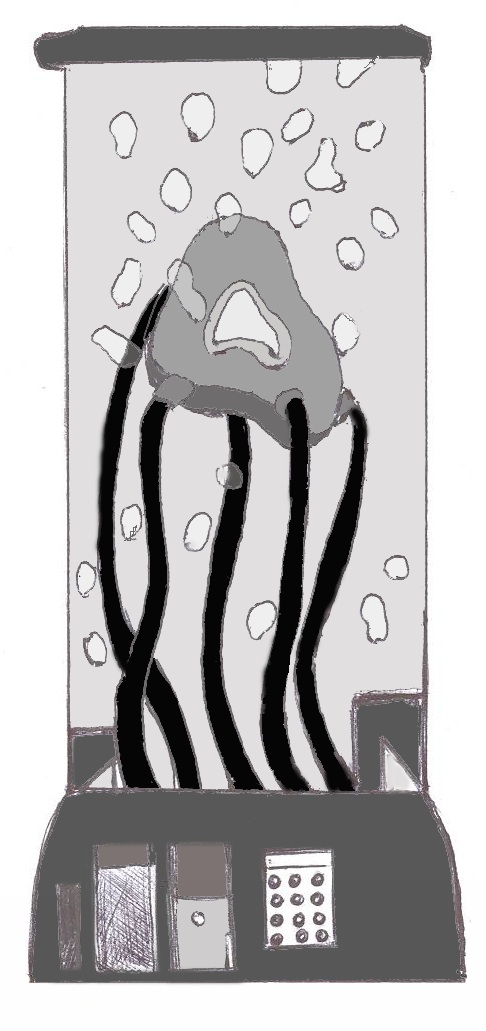It's not murder anymore
In vitro meat gives birth to a whole new food discussion
"How does the chicken's leg get from the chicken to my plate?" "Do fish like being killed?" "How do you make steak?" That is what I asked my mother one evening at the dinner table when I was four years old. She gave me honest answers. I never ate meat again.
But what if the answer had been "Well, sweetie, the meat is cultured in a sterile lab environment from a couple of animal cells?" My response might have been a little different.
Research into in vitro meat, or cultured meat, has been on the rise over the past couple of years. In simplest terms, in vitro meat is a hamburger grown in a Petri dish. Of course, in another ten years, the definition could expand to include, pork chops, Salisbury steak and turkey dinners at the same prices and with the same taste as "traditional" meat, according to New Harvest, an organization involved in alternate methods of meat production.For now, however, in vitro meat looks like the ground beef people make into burgers during Labor Day barbeques; it's a little bit squishy and doesn't have a whole lot of structure.
Despite its outward appearance, in vitro meat might just be the best thing for omnivores since animal domestication.
Only a few cells are necessary to begin the process, and after that it ideally wouldn't need more cells to keep going, sort of like a yogurt or cheese culture; it just keeps building on itself. Fortunately, the starter cells can be taken from a live animal, so the animal rights activists like me will be elated to know that animals won't have to be injured or killed to make this new meat happen.
This is a fantastic alternative to traditional meat production practices, particularly in the United States, where animals are shoved in tiny cages, pumped full of hormones, and slaughtered in inhumane, painful environments.
In vitro meat circumvents the cruelty of traditional farming methods because there are no animals to farm. The meat is produced in a sterile lab - no animal evisceration, no antibiotics, no boiling chickens alive.
Jason Matheny, co-founder of New Harvest, recognizes that in vitro meat won't replace all of traditional meat production.
"If we could even replace ten percent of regular meat with cultured meat, it would still be billions of animals prevented [from] having to suffer in that way," Matheny said.
But the animals aren't the only ones currently suffering; traditional meat production practices are hurting the environment, too. The global meat industry makes up about 18 percent of global greenhouse emissions, which is more than the entire transportation sector creates.
A good portion of those emissions comes from running the equipment necessary to feed and slaughter livestock, but another sizable hunk comes from - interestingly enough - farting cows. Ruminants, or animals that digest their food a few times, like cows and sheep, put a lot of methane into the atmosphere, which contributes to global warming.
But since cultured meat only produces edible meat that doesn't have to eat, it doesn't require a digestive tract. No digestive tract means no farting cows, and no farting cows means less methane.
And since meat that isn't associated with an animal doesn't need feeding, there is no need to farm food for consumption by livestock. It isn't necessary to dig up the soil and use pesticides, most of which end up in the waterways, on big, industrial farms just to feed the cows.
Not only is the in vitro option healthy for the environment, it's healthy for us! We would be producing hamburgers that prevent heart attacks instead of causing them. Since the meat is being produced in a lab, it is possible to create the ideal fatty acid ratio.
The main concern among critics appears to be that the meat is engineered, but in reality, it's safer than most of the things people buy in a grocery store. Most industrially produced meat is pumped full of hormones and antibiotics. Plus there's practically no risk at all of feces contamination. Frankly, I'm getting tired of all the salmonella scares on the news these days.
But would I, the girl who hasn't eaten anything with a face in fourteen years, eat in vitro meat? Well, given all its environmental and health benefits, I have to say…
No. In vitro meat is great, but tofu and other vegetarian alternatives are still better. Despite all the virtues of cultured meat, tofu is cleaner, it's healthier, it's better for the environment and, in my opinion, it's way tastier.
But let's get real. Just because meat isn't the best option doesn't mean that people are going to stop eating it. Eating meat is genetically hardwired into the human brain; we look at a pig and think "mm, BLT." In vitro meat is a way for people to keep eating meat in a kinder, healthier, more sustainable way, and even a vegetarian like me can get behind that.
Philipa Friedman. I am the Print Managing News Editor for the 2010-2011 school year. My other school-related extracurriculars include: French Honors Society Director of Carpentry, stage manager and sound technician for Blair theater Did you see that? No serial comma. PRINT RULES! More »
Comments
No comments.
Please ensure that all comments are mature and responsible; they will go through moderation.
